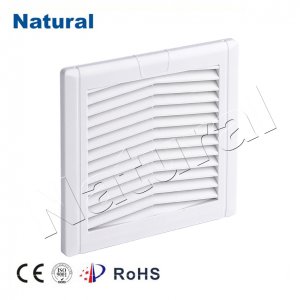Filter fans, an ingenious invention in the world of ventilation and air conditioning, have made significant contributions to various industries and our daily lives. These unassuming devices have evolved over the years, and their importance cannot be overstated. In this article, we will delve into the world of filter fans, exploring their origins, working principles, applications, and the future prospects of this essential innovation.

Origins of Filter Fans The concept of filter fans can be traced back to the early 20th century when industries began recognizing the need for effective ventilation and cooling systems. It was during this period that engineers and inventors started developing methods to maintain optimal working conditions in industrial environments. The result was the birth of filter fans, which combined the principles of air filtration and forced airflow to create a game-changing solution. How Filter Fans Work Filter fans operate on a simple yet effective principle. They consist of two primary components: a fan and a filter. The fan draws ambient air into the enclosure, and this air passes through the filter before being expelled. The filter, often made of materials like fiberglass or polyester, captures dust, particles, and contaminants, ensuring that only clean air enters the enclosure. This process not only helps maintain a clean and dust-free environment but also prevents overheating of electronic components within the enclosure. The cooling effect of filter fans is particularly crucial in environments with sensitive electronic equipment. By dissipating heat efficiently, these devices help extend the lifespan and reliability of machinery, reducing downtime and maintenance costs. Applications Across Industries Filter fans find applications in a wide range of industries: Electronics:In control cabinets and electrical enclosures, filter fans prevent the buildup of heat, ensuring electronic components operate optimally. Food and Beverage:Filter fans help maintain hygienic conditions by providing ventilation in food processing and storage areas, preventing the growth of mold and bacteria. Automotive:Automotive manufacturers use filter fans to control the temperature and humidity levels in paint booths, ensuring flawless paint finishes. Pharmaceuticals:Laboratories and pharmaceutical manufacturing facilities rely on filter fans to maintain sterile environments, preventing contamination of sensitive substances. Agriculture:In greenhouses, filter fans regulate temperature and humidity, promoting ideal conditions for plant growth. The Future of Filter Fans As technology continues to advance, filter fans are not exempt from innovation. Manufacturers are exploring ways to make these devices more energy-efficient, quieter, and capable of handling larger volumes of air. Additionally, with the growing awareness of environmental concerns, there is a push towards developing more sustainable filter materials and manufacturing processes. Furthermore, the integration of smart technology into filter fans is becoming increasingly prevalent. This allows for remote monitoring and control, predictive maintenance, and the ability to adjust airflow and filtration based on real-time data. These advancements are revolutionizing the way filter fans are utilized, making them even more indispensable in various industries. In conclusion, filter fans may appear to be modest devices, but their impact on our daily lives and industries cannot be underestimated. From their humble beginnings to their ever-evolving capabilities, filter fans continue to play a crucial role in maintaining clean, cool, and efficient environments. As technology progresses, we can look forward to even more innovations in the field of filter fans, further enhancing their utility and sustainability.